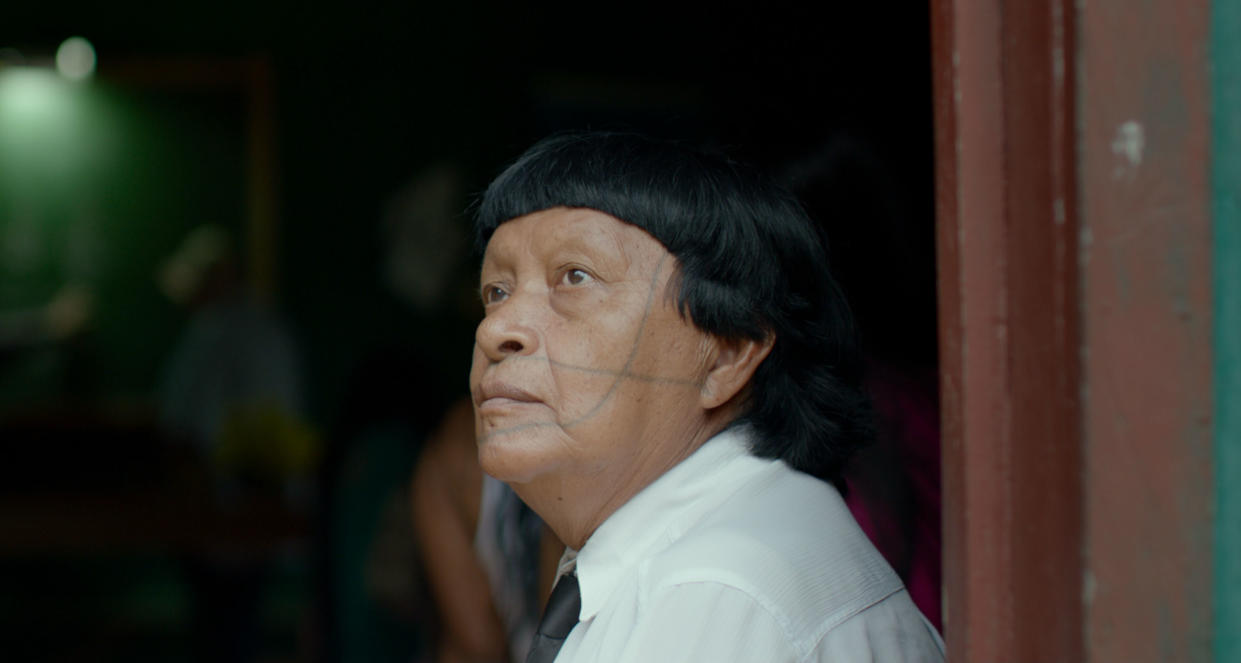Berlin: Luiz Bolognesi Talks ‘Ex-Shaman’

BERLIN — The Indigenous People from Brazil released a manifesto to coincide with the world premiere of Luiz Bolognesi’s “Ex Shaman” at this year’s Berlin Film Festival. Sub-headed “More Shamans, Less Intolerance,” the manifesto, included signatures from multiple indigenous people’s organizations and a number of leaders from within those communities.
The authors call for an increased respect to all things natural, and curbing negative human-made social constructs like intolerance, racism and hate. Typical of shamanistic beliefs the world around, the manifesto doesn’t limit the proposed improvements solely to the way we interact with people, but explains we must: “start learning to share the world with other living beings. Living, seeing and recognizing each other in our gaze, with reciprocity, respect for humans and respect for nonhuman beings too, side by side, living together in our differences.”
Lamenting past atrocities executed against the native peoples of the Amazon by protestant and evangelical missionaries, the manifesto protested that these cruelties continue to this day. Only now these groups have aligned with mining and logging organizations who look to profit off the land, the way that missionaries profit off their souls.
“More Shamans, Less Intolerance” sums up, in more explicit fashion, the spirit of “Ex-Shaman,” co-produced by Brazil’s Gullane, sold by Upside Distribution, and which has world premiered in the Berlin Film Festival’s Panorama section.
“Ex-Shaman” represents the second feature of Luiz Bolognesi whose debut, “Rio 2096, a Story of Love and Fury,” won Annecy Festival’s best picture Crystal in 2013. It turns on Perpera, the near 80-year-old former-shaman of the Amazon’s Pater Surui community, now a doorman at the local evangelical church.
It portrays Perpera’s Paiter Surui community as the victims of culture clash and a culture void. They do not trust entirely Western medical care., in crisis call on Perpera once again. They use guns, but there seems little satisfaction is doing so. Some has converted to Christianity but this seems to be singing hymns in church by rote. Variety chatted to Bolognesi about “Ex-Shaman”:
What drove you to make “Ex-Shaman” which is quite different in format from your debut, an animated feature, though not so different in focus?
The desire of giving expression to the knowledge of America’s shamans who are the religious and scientific owners of 4,000 years of wisdom. During the research, it came out that they are under attack and I decided that should be my plot. I count on fiction narrative strategies in the background and shot with a documentary approach. I am a storyteller and formats can change in each project. The most important is to connect audience to a powerful story with good characters.
Could you explain why you shot in CinemaScope?
Most of the documentaries on indigenous subjects are done in a spirit of urgency, with the camera following certain events, without rigor. This results is poorly-constructed images. Since I wanted to capture the spiritual greatness and richness of their culture, I opted for being more careful with aesthetics, a poetic and attentive look at the beauty that surrounds them and that they cultivate. Hence the choice of CinemaScope, and rigor in the takes. It was an act of respect and a choice of poetry rather than prose.
Though a documentary, there are lots of elements which are often found in fiction films. I wonder if you could comment….
“Ex-Shaman” is a borderline film between documentary and fiction. The narrative follows fiction strategies. Although we are in front of real characters living real situations, we structured the editing as if we were making a fiction narrative. We wanted the spirit of the images, not just the images themselves. Looking for a symbolic meaning of actions and a development among them that brings new meanings to the narrative.
We sense from the film that the Paiter Surui are in a kind of ethnic no-man’s land. Again, could you comment?
The Paiter Surui lived in the forest without contact with white men until 1969. They have been in full contact with forest ways of life for 4,000 years. They are warriors and have a strong philosophy and culture. But for the diseases that came with white man they didn’t have antibodies. And after contact, thousands of then began to die without shamans succeeding in dealing with it. So, like the Japanese after being beaten in WWII, they felt they should adopt the culture of oppressors. But I feel they do that for as part of their struggle, not to watch their culture die. Let’s see.
In Perpera a star is born. He seems a natural protagonist. I wonder if this is connected at all to his former role as the community shaman.
The crew of the film used to say we had a movie star without a trailer in front of our camera. An anthropologist who studied the Paiter Surui wrote about the shaman’s insolence, since they were used to receive everything they need from the warriors: Hunting, sacred tobacco, food and even women to love. Perpera is used to that also. He is the only one for whom the spirits of the forest talk. There is no difFerence between Perpera andBrad Pitt or George Clooney, except for the fact that Perpera overacts less
Related stories
Berlinale: Films Boutique Takes World Sales on Vivo Film's New Title 'Flesh Out' (EXCLUSIVE)
Berlin: Kai Greene Stars in 'Crazy Fist' for All Rights Entertainment (EXCLUSIVE)
'Leftover' Directors Set Dystopian Animated Tale 'White Plastic Bag' (EXCLUSIVE)
Subscribe to Variety Newsletters and Email Alerts!

